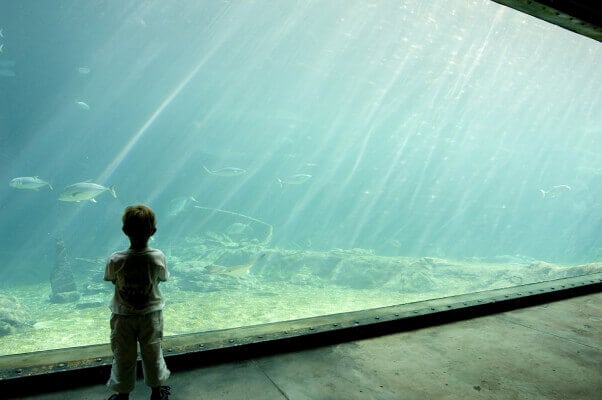400 Fish Poisoned at Aquarium, PETA Calls for Robotic Replacements
Nearly 400 fish, large and small, were killed at the Texas State Aquarium last week when the contents of a mislabeled container—which was thought to contain a drug that treats parasites but actually held a chemical toxic to marine life—were emptied into three exhibits. In response, PETA—whose motto reads, in part, that “animals are not ours to use for entertainment”—sent a letter this morning to aquarium CEO Tom Schmid offering to contribute $10,000 toward a state-of-the-art animal-free exhibit if the aquarium agrees not to restock the tanks with new live fish.
“Even the largest tank cannot mimic a river or ocean and so cannot offer the kind of vast, open environment that fish need,” says PETA Deputy General Counsel Delcianna Winders. “With so many modern, stunningly lifelike options available, including robotics, animatronics, and virtual reality exhibits, PETA is asking the Texas State Aquarium to go forward in a direction that will please crowds and spare fish the misery of confinement.”

In a letter to Texas State Aquarium President and CEO Tom Schmid, James Rodgers, PETA’s director of innovation, wrote:
“Would you consider remaking the exhibit as a progressive facility that rejects the cruel practice of using captive live animals and instead uses one of many visually stimulating, state-of-the-art aquatic alternatives? To help you get your feet wet, we’d be willing to pledge $10,000 toward such a new exhibit if you pursue that direction.”
Even the largest tank cannot offer the kind of environment that fish need in order to thrive. Fish are genetically adapted to swim in much larger bodies of water. Research shows that fish are intelligent animals who can recognize individuals and maintain complex social relationships. Being exposed to loud noises and flashing cameras in the tanks as well as being restricted in their movements certainly has a negative impact on their health and well-being.
“More and more people are recognizing the cruelty in keeping sea-dwelling animals in tanks and are turning away from such displays,” Rodgers wrote. “Artistic and elegant blown-glass animals have been paired with underwater footage of animals in their natural environments to create unique eye-catching exhibits. In addition, attractive robotic fish, such as those developed in the U.K. and by Japanese researchers, can swim around a tank like real fish and offer the same beauty and calming effects that a live-animal aquarium does but without any costly upkeep or liability in the event of an incident such as the recent poisonings at Texas State Aquarium.”

